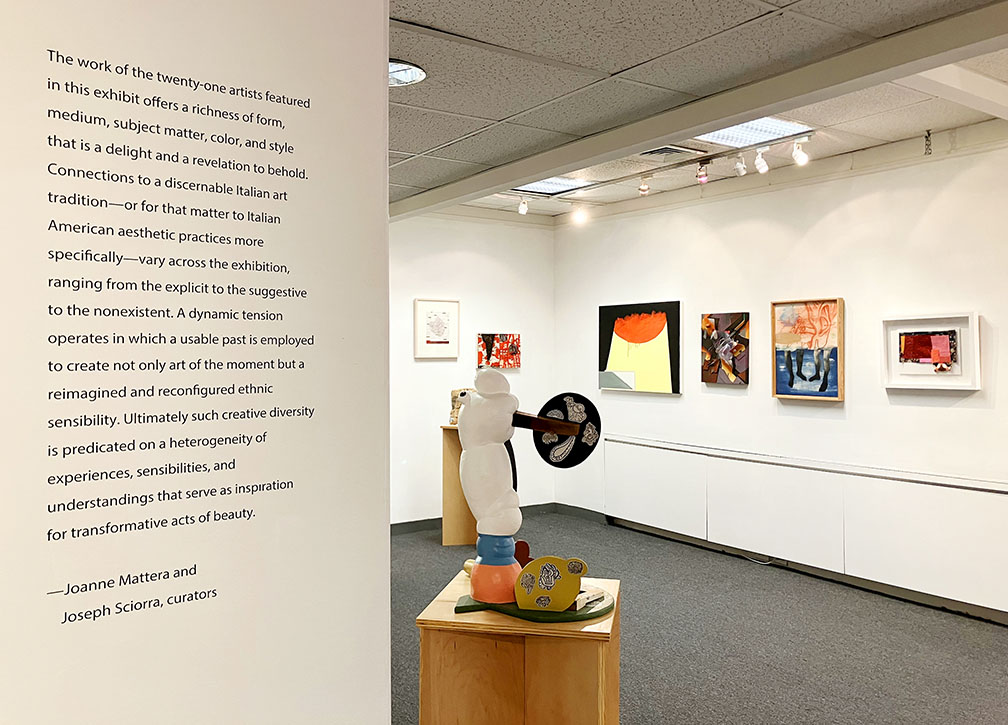
On the occasion of “A Legacy of Making: 21 Contemporary Italian American Artists,” a sprawling group show on view at the Calandra Institute through January 12, 2024, Two Coats of Paint invited John Avelluto, one of the artists in the show, and Joanne Mattera, the mastermind behind the whole project, which began as an online exhibition called “Italianità,” to talk about growing up in Italian families, and how the experience shaped their lives and their work. John currently has a solo exhibition on view at Stand4 in Bay Ridge, Brooklyn, too.
Joanne Mattera: We were thinking we might give this conversation the irreverent title of Ginzo Gab, but irony notwithstanding, we agreed it was not in our best interest. We have plenty to talk about without incurring anyone’s wrath. We come from Italian families (John is first generation here; I’m second). We both speak the language passably. And we’re both artists. Also, our professional lives have been intertwined for the past year with this exhibition and an accompanying book. John, you also have a show up at Stand4 in Bay Ridge, Brooklyn, called “Impasta Hangbags.”
John Avelluto: I am really happy to show in one of the neighborhoods I grew up in, and I continue to live and work there. It’s important to me to do so, especially with my subject matter, which engages Italian-Brooklyn tropes. Though much of that culture has diminished here over time and many Italian Americans have moved out, some businesses, traditions, and vernacular architecture remain. My perspective as the child of immigrants and as a Southern Brooklyn native witnessing changes over 44 years has a strong place in my studio.
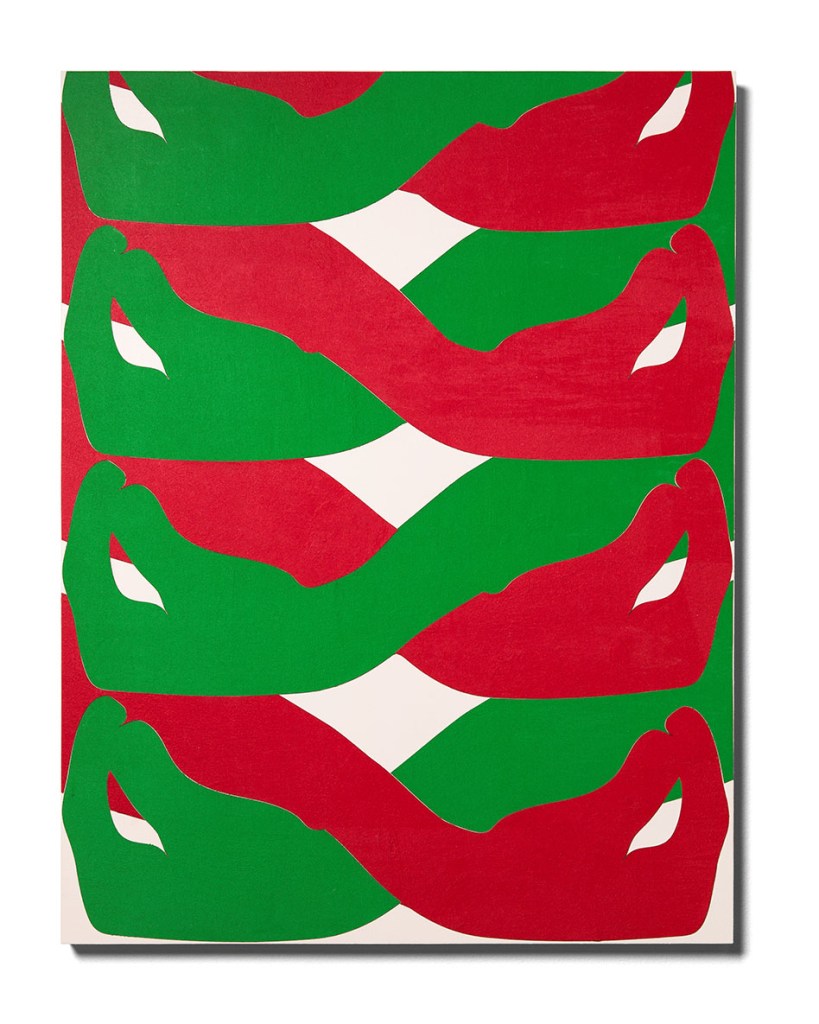
“Impasta Handbags” is intended to be a comical description of the work in the exhibition. I came up with the title in collaboration with Paul D’Agostino — the artist, writer, and Italian translator who curated the show. “Impasta” sounds like a Brooklynese spelling of “impostor,” of which there are many in the show via trompe l’oeil: cannoli, cookies, and mortadella sculpted entirely from acrylic paint. Also, carrying the technique reference, the word is similar to the painting term, impasto.Adding the “a” at the end brings “pasta” into the picture, which I have also made, with sauce and cheese, in acrylic. With “Handbags,” the reference is to the Italian gesture that brings together the thumb and fingers. The phrase for this gesture in Italian is mano a borsa, literally translated as hand purse, and it means “What do you mean?,” or in Italian, “Che vuoi?” With stronger gesticulation, it’s more akin to “WTF?” I use this gesture’s visual representation in many of the works in the exhibition. There’s even a newly minted emoji of the gesture on social media.
JM: I’d add that our visual language goes beyond hand gestures. It’s in facial expressions and body language. Any Italian movie will bear that out. Some years ago, I studied American sign language with deaf teachers. The great gift they gave to their students was to include us in social events with their friends. It was not easy conversing in sign language in real time, as opposed to the slower pace of the classroom, but I was thrilled to discover some deaf Italian American signers in their circle. I knew that other language they used, the body language, and it allowed us to fill in the gaps and really chiacchierare, chat.
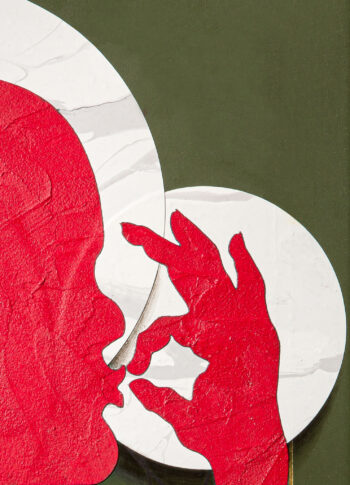

JA: I’m intrigued by what happens when specific cultural phenomena evolve within a broader context. For instance, the iconic heavy metal singer Ronnie James Dio, after becoming the frontman of Black Sabbath, introduced to his audience a gesture he often saw his grandmother perform, which he knew as a strega (witch) curse. Over time, this gesture became a customary part of the concerts, seemingly innocuous. What many don’t realize is that this gesture, known here as a mano cornuto is used to ward off evil or invoke a cuckold upon someone. I wonder what the mano a borsa gesture, now that it has entered the global emoji lexicon, will come to mean over time. Joanne, you curated several hand-gesture works into Italianità, which started as an online exhibition, became a book, and is now an exhibition at the Calandra Institute in Midtown Manhattan.
JM: Let me respond with a gesture of my own, the al bacio. I’m bringing the mano a borsa to my lips, kissing my fingertips, and then opening my hand in a little explosion of satisfaction. I’m using this gesture because everything’s good right now (tocca ferro, knock on iron, as the Italians say) and because it’s the gesture on the cover of Italianità—which just happens to be a detail from one of your paintings. The book, Italianità: Contemporary Art Inspired by the Italian Immigrant Experience, is newly published, and I’m gratified that the exhibition has settled in for a long run at the John D. Calandra Italian American Institute.
I co-curated the show, selecting artists from Italianità with Joseph Sciorra, Director of Academic and Cultural Programs at the Calandra Institute. Joseph wrote the foreword to the book, so he was familiar with its premise and also the artists. All 59 artists in the book are making wonderful work, but the Calandra gallery is modestly scaled, so to narrow the parameters, we focused on those who live in and around New York City.
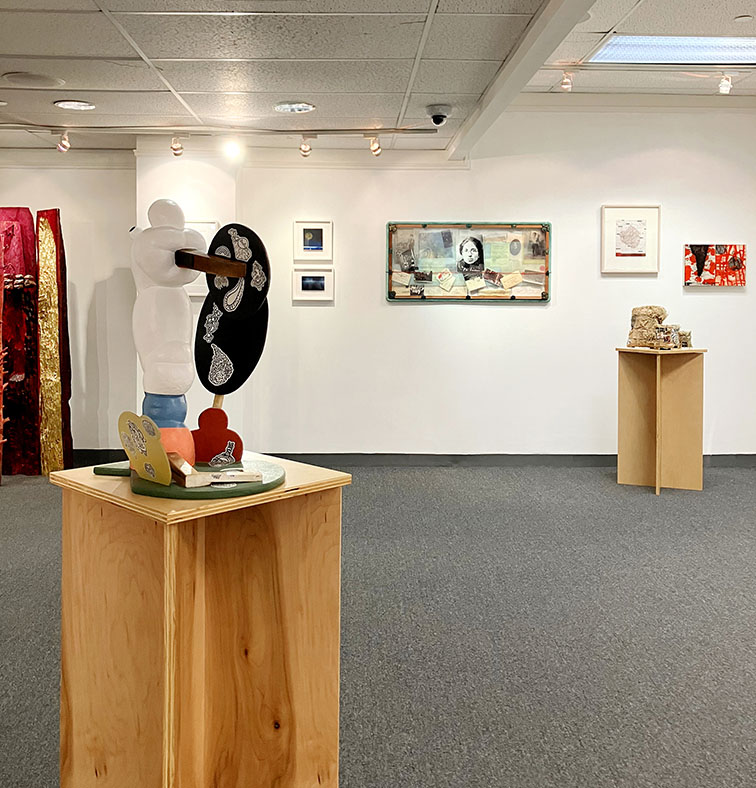
We curated the exhibition with several themes. Mapping Routes, focuses on immigration histories and vernacular expressions. Diana González Gandolfi’s maps, B. Amore’s montages of family history, Claudia DeMonte’s corno (good luck horn), and your own painting with operatic gestures are some examples. The second theme, A Legacy of Making, which gives the show its name, acknowledges the artisanal and craft traditions that so many of us know. Nancy Azara’s carved and gilded wood sculpture, Jennifer Cecere’s outsize doilies from laser-cut nylon embellished with paint, and D. Dominick Lombardi’s quirky sculpture that draws from the woodworking techniques he learned from his father and grandfather are included here. The third theme, No Accent on the Italian, features work by artists who were informed personally by the culture but whose work is not immediately recognizable as having italianità—Italianness. Works in this group include Anna Patalano’s gestural abstraction, Karen Schifano’s harder-edged geometry, and Timothy McDowell’s figurative painting, which taps into Renaissance imagery but refers to a different immigration, that of Africans making a new home in Italy.
Italianità, the book, grew out of the website of the same name, I started the website after hearing the previous occupant of the White House make deeply offensive comments about immigrants. He was not referring to Italians, but immigrants from all countries work hard to make a home here. I focused on the experience I knew and found many others—Italian Americans and those from the Italian diaspora—with stories not unlike my own. Their stories are an essential component of the book. I think “Italian American” is different from “Italian.”
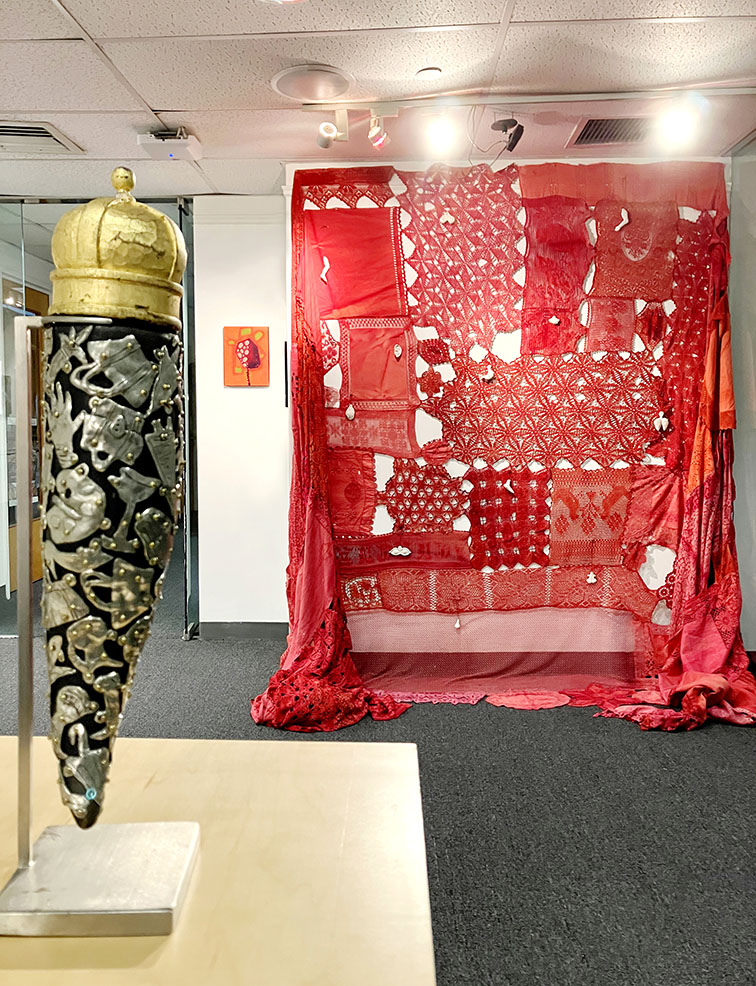
JA: I feel as though Italians are more progressive, not in a political sense, but with ideas of identity. Some Italian Americans, especially in urban areas, have distilled their identity into signifiers like certain food (gabbagool, moozadell ), particular virtues (hard-working, loyal), of which, like many immigrant cultures, have adapted and bear little on the contemporary reality for Italians in Italy, who, aren’t bogged down by certain ideas. For instance; while visiting a pizza shop in the piazza of my father’s very small town of Mola di Bari, Puglia, there’s no chicken parm offered but they did have würstel on a slice, something that would infuriate an IA as much as pineapple on pizza. There is the added nostalgia for an Italy that no longer exists.
I was brought up in an area with a population that had been here for several generations as well as folks fresh off the boat, so there was a mix of Italians, Italian Americans, and American kids with Italian last names. It was strange growing up in a place where you were constantly adjusting yourself as I was–too Italian for the Americans, and wholly American to the Italians. Not to mention I was on the border of Gravesend and Coney Island, so there were other immigrant populations influencing the overall culture of the neighborhood.

JM: Sometimes identity is just a matter of perspective. My aunt Antonetta was raised in Italy by her aunt and uncle, reuniting with her parents and meeting her American-born siblings when she was 25. She always referred to us as “you people,” not derogatorily, but as I came to understand, to acknowledge the ocean that had existed for so long between her and everyone else. So you can imagine her surprise when she returned to her paese, her hometown, a couple of decades later and found herself referred to as l’amerigan.
But I have to say that the whole time I was growing up, I thought of myself as Italian, too, even if I was one of my aunt’s “you people.” I don’t think we used the term Italian American. Yet I knew there were differences. The old Italians in the family—indeed in the neighborhood—wazza takka lakka deez. In my preschool mind, everybody old sounded like that. It took me a while to understand that there was a mix of languages under one roof: the English my parents spoke, the broken English the old folks spoke to me, the dialect Italian they spoke to one another, and the school-learned standard Italian my aunts and uncles spoke out in the world and that I was learning in school as well. The people who whine, “Speak English,” don’t understand that in a new immigrant household four languages of this sort might be spoken at the same time. I was lucky in that I heard it all and understood a good deal of it. The generation after me missed out on the broken English, the dialect, and the Italian.

JA: When did you draw a connection from your cultural background to the work you were making?
JM: My mother’s family was immersed in textiles. The two great-grandmothers in the Old Country were weavers. My grandfather was a tailor who taught his craft to one of my aunts, who became a dressmaker. The other aunt, the one who came here at 25, worked in a factory but did handwork for pleasure. These aunts taught me what they knew how to do, and my fondest memories as a child are of sewing, embroidering, knitting, and crocheting with them, listening to their stories, hearing them speak the ortonese dialect together, and Italian and English with me. From them I learned the pleasure of making, which in part propelled me to art school. So the connection was always there. After art school I shredded my large stain paintings and wove the strips into reconstructed paintings. That was a major “aha!” moment, since I literally interlaced the painting I learned at MassArt with the handwork I grew up with. There followed a brief infatuation with loom weaving, but since then my work has not involved actual textiles. However, I love fabrics, both how they are made and what is made from them. As my family’s DNA has asserted itself, my paintings have developed a distinct textile sensibility, both in the way I make them—swiping the brush from edge to edge as a weaver would throw the shuttle from selvedge to selvedge—and in the surface of my color fields, which suggest a grain or weave. I find myself continuing the family line in my own way. So we’re Italian and American and artists, and yet—our exhibition titles notwithstanding—we don’t typically refer to ourselves as “Italian American artists.”
By the way, there was one item in which Italian and American were completely and irrevocably different: bread. We ate Italian bread with dinner, but for lunch the kids wanted sandwiches made with “American bread.”
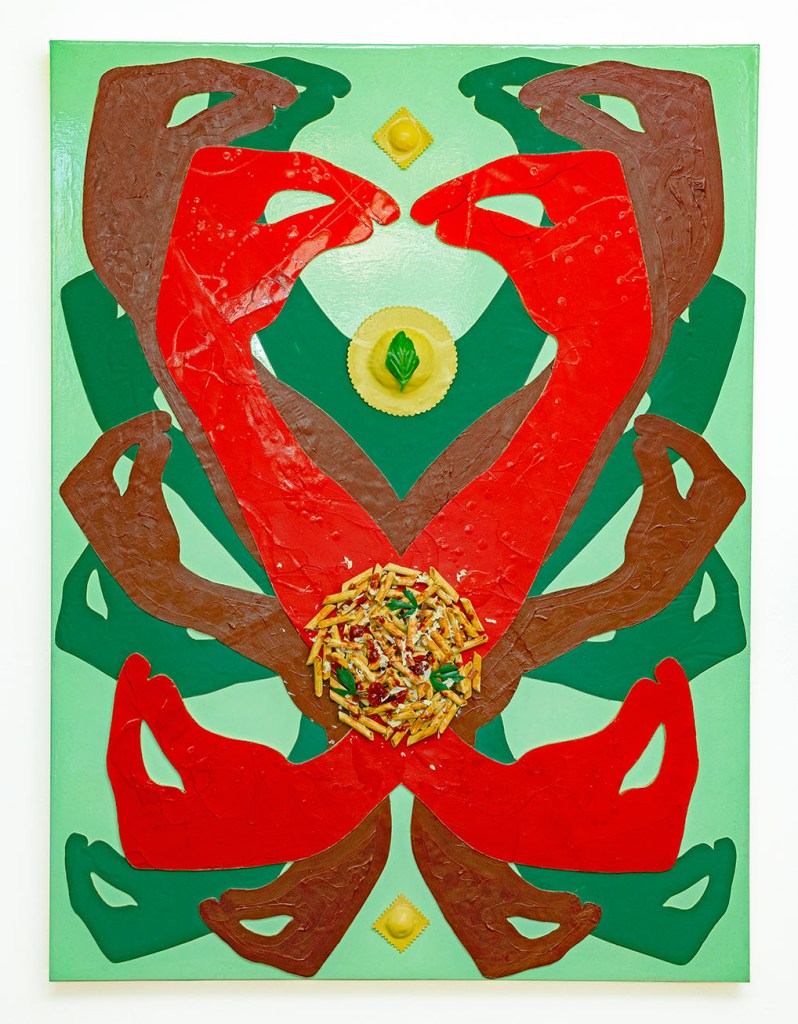
JA: I sometimes feel like a “townie” in Brooklyn. I’ve never really left to pursue life anywhere else, since I attended CUNY Brooklyn College for both my graduate and undergrad degrees. But ultimately, I don’t want that identity to become a trap for my practice. While these aspects are part of me, I look forward to taking them further, abstracting and obfuscating the readily recognizable signifiers in my work so they take on new and different identities. I have many artistic interests.
JM: John, I’m going to quote you from the book, because you sum up the thinking so well: “I draw from the culture. I embrace the mishmash, but I am not an ‘Italian American artist.’ I may be painting Italian pastries now, but one day I may want to make blue abstract paintings.” I love this because I do make blue abstract paintings. Perhaps we can end by noting that now, when ethnicity and cultural legacy are part of the art world conversation, this convo—and, indeed, our projects—contribute to that larger discussion.
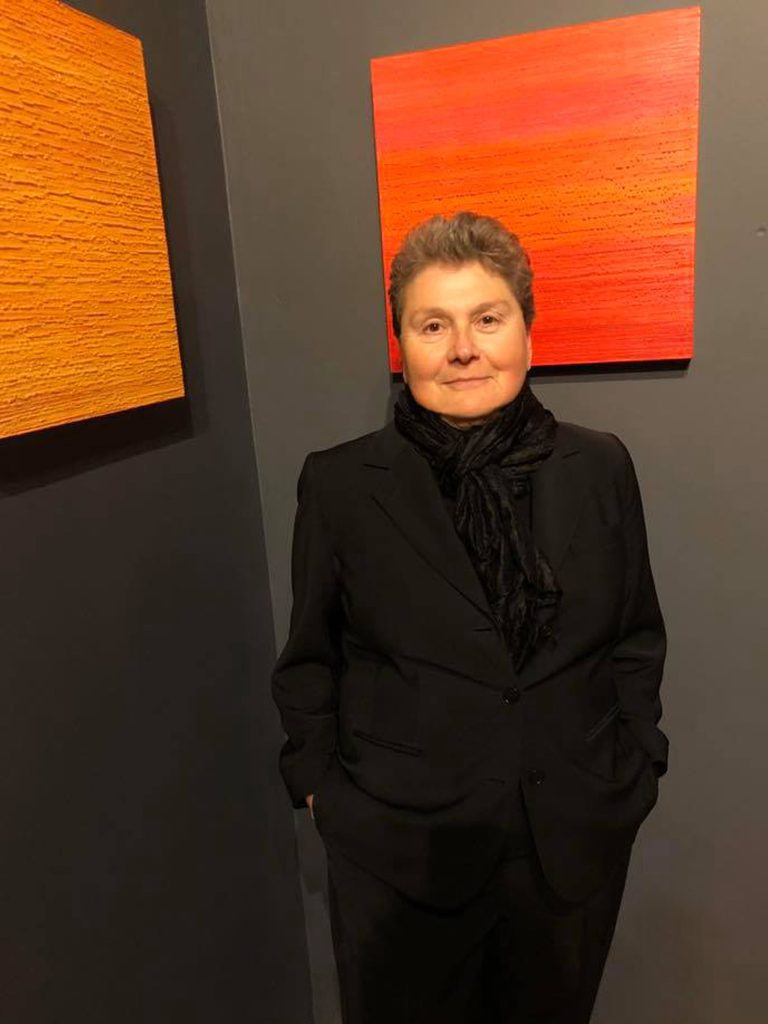
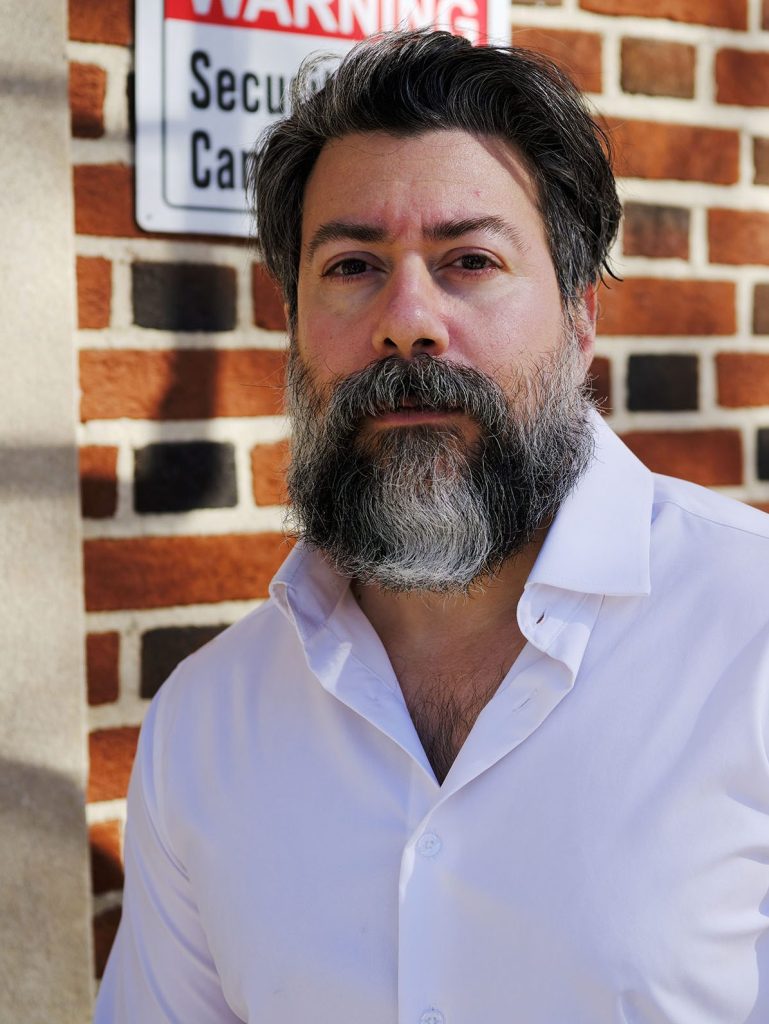
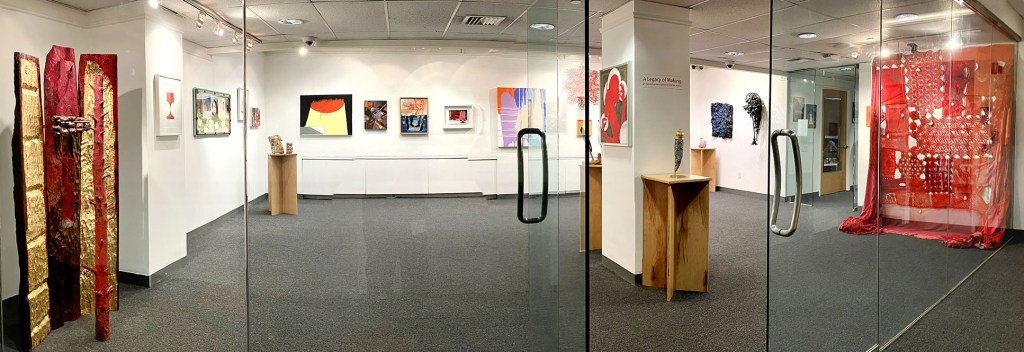
NOTE: John and Joanne will be in conversation at Stand4 on Saturday, November 11, 3:00-4:30. Click here for more information.
“John Avelluto: Impasta Handbags,” curated by Paul D’Agostino. Stand4, 414 78th Street, Bay Ridge, Brooklyn, NY. through November 25, 2023. Essay by Paul D’Agostino is available here.
“A Legacy of Making: 21 Contemporary Italian American Artists,” co-curated by Joanne Mattera and Joseph Sciorra, Calandra Institute, 25 W. 43 Street, 17th floor, New York, NY. Through January 12, 2024. Artists in the exhibition will be in the gallery for an informal discussion of their work on Wednesday, December 13, 6:00-7:30 p.m. Link: www.calandrainstitute.org
Italianità: Contemporary Art Inspired by the Italian Immigrant Experience is available through BookBaby now and from Amazon as of November 14. Link: https://store.bookbaby.com/book/italianit%c3%a0
NOTE: The Two Coats of Paint 2023 Year-end Fundraising Campaign is underway, and our goal this year is to reach 100% reader participation. If you enjoy the artist interviews, exhibition reviews, NYC and HV Selected Gallery Guides, and other Two Coats painting-cenric content, this is your opportunity to be a part of it. Please consider making a tax deductible contribution to support the project in 2024. Thank you for all your help keeping the conversation going.


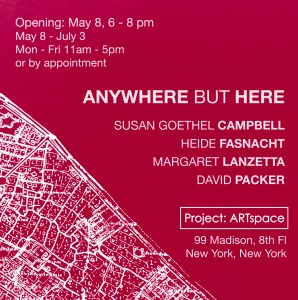













Very nicely done Joanne Mattera and John Avelutto. And many thanks to Two Coats of Paint for posting.
I have just noticed on line the Italian American exhibition information. I am an Italian American artist (painter) and have exhibited extensively in New York City, nationally and abroad. I just recently have shown at Harpers East in Manhattan together with my wife Sandra Caplan. Both my parents were born in Italy: my mother in Pisa and my father in S. Benedetto del Tronto (le Marche). The Italian spoken at home was strictly Tuscan:anything else was frowned upon. We have spent the last twenty years dividing the year between New York City and Italy. If you care to please take a look at my website. Ray Ciarrocchi
… excellent show, informative interview…much appreciation joanne mattera and john avelutto…💥❤️🌀
Congratulations Joanne and John. What a great group exhibition , also some fun tongue in cheekiness about being Italian. Enjoyed this interview.
Fascinating Italian American art at the Calandra Exhibit! Artists generously engaged with visitors: significant revelatory exchange of ideas on what italianità is and isn’t. Love this discussion between Avelluto and Mattera—seriously complex with clarity. Grazie per un gran lavoro at Calandra and beyond any limitations of context.